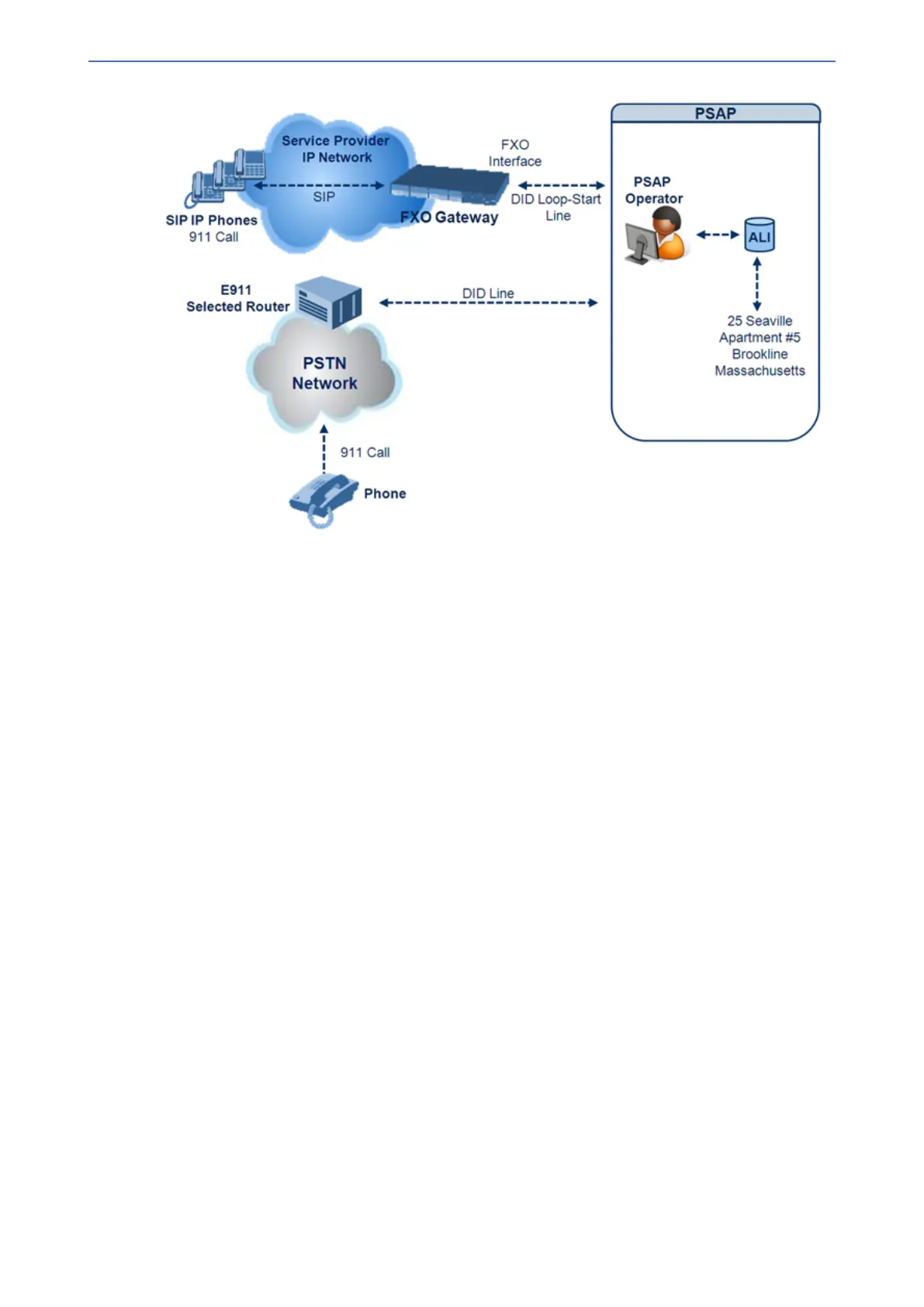CHAPTER28 Configuring Supplementary Services
Mediant 1000 Gateway & E-SBC | User's Manual
When an IP phone subscriber dials 911, the device receives the SIP INVITE message and makes
a call to the PSAP as follows:
1. The FXO device seizes the line.
2. PSAP sends a Wink signal (250 msec) to the device.
3. Upon receipt of the Wink signal, the device dials MF digits after a user-defined time
(WaitForDialTime) containing the caller's ID (ANI) obtained from the SIP headers From or P-
Asserted-Identity.
4. When the PSAP operator answers the call, the PSAP sends a polarity reversal to the device,
and the device then sends a SIP 200 OK to the IP side.
5. After the PSAP operator disconnects the call, the PSAP reverses the polarity of the line,
causing the device to send a SIP BYE to the IP side.
6. If, during active call state, the device receives a Wink signal (typically of 500 msec) from the
PSAP, the device generates a SIP INFO message that includes a "hookflash" body, or sends
RFC 2833 hookflash Telephony event (according to the HookFlashOption parameter).
7. Following the "hookflash" Wink signal, the PSAP sends DTMF digits. These digits are
detected by the device and forwarded to the IP, using RFC 2833 telephony events (or inband,
depending on the device's configuration). Typically, this Wink signal followed by the DTMF
digits initiates a call transfer.
For supporting the E911 service, used the following configuration parameter settings:
■ Enable911PSAP = 1 (also forces the EnableDIDWink and EnableReversalPolarity)
■ HookFlashOption = 1 (generates the SIP INFO hookflash message) or 4 for RFC 2833
telephony event
■ WinkTime = 700 (defines detection window of 50 to 750 msec for detection of both winks - 250
msec wink sent by the PSAP for starting the device's dialing; 500 msec wink during the call)
■ IsTwoStageDial = 0
■ EnableHold = 0
■ EnableTransfer = 0
● Use RFC 2833 DTMF relay:
◆ RxDTMFOption = 3
- 671 -

